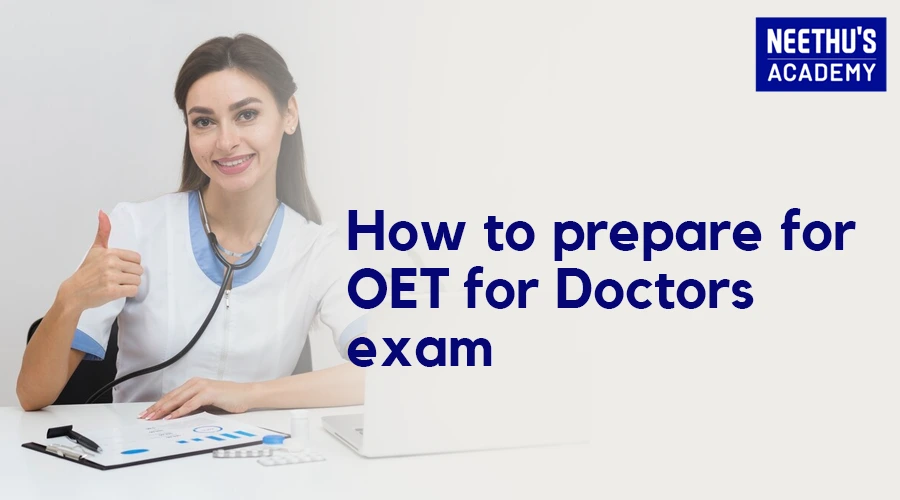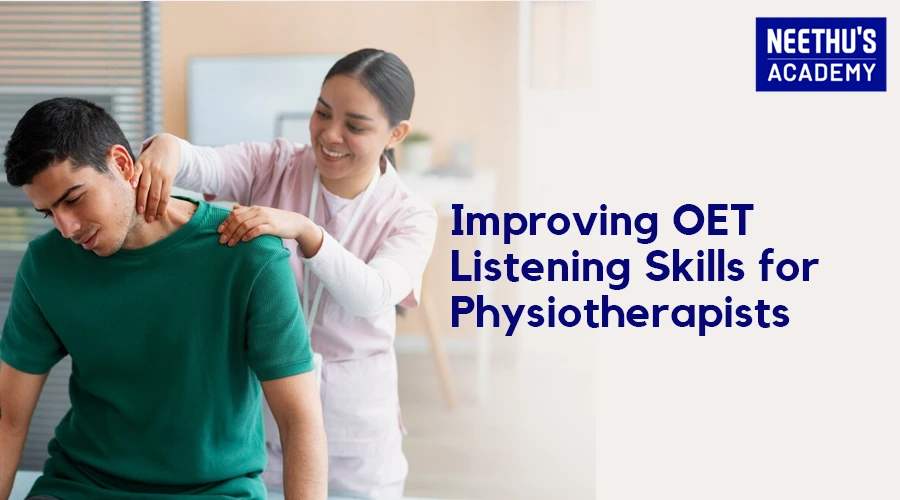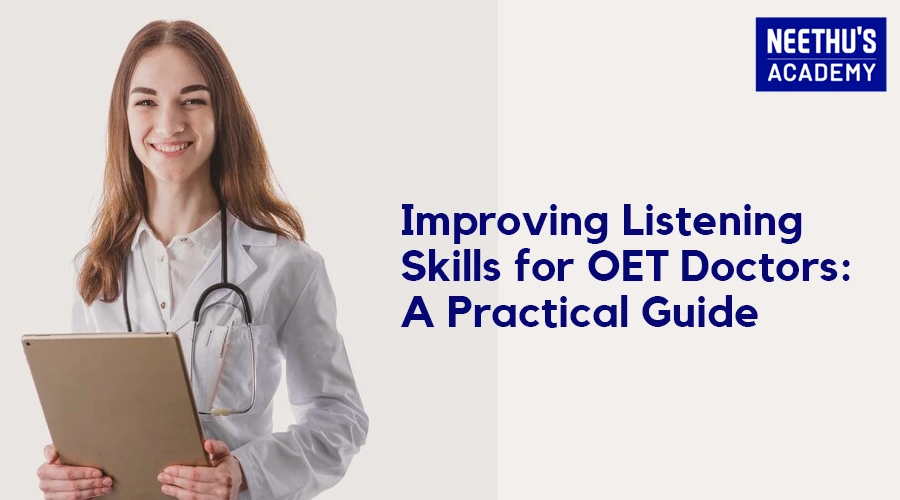The Guide to your OET for Doctors Exam: All you need to know
Very few English language proficiency tests are targeted towards Health Professionals. Among these, the OET tests lead the industry. But here’s the catch! Even healthcare workers can specialize in the OET tests they take. There are different OET exams for different medicos such as Nurses, Pharmacists, and Doctors. The Occupational English Test aspires to assess whether a doctor, among other medical professionals, is proficient in the use of the English language through tasks that are practical and applicable. In general, high performers in OET will get employment in English-speaking countries like the UK, Australia, New Zealand, and Ireland. For doctors who are planning to sit for the OET exam, the test will be covered in broad detail going over everything from the basics to practical study techniques.
Apart from basic language ability this test covers medical terminology and interactions important to everyday health care, thereby ensuring doctors who are not native speakers of the English language could communicate in all settings of health care.
Doctors planning to practice in countries where English is mostly spoken must take the OET. The OET is quite different from the rest, like IELTS, in that it was especially designed for healthcare professionals. It contains special exercises and scenarios pertinent only to your profession.
In this blog, we’ll discuss what the OET Exam for Doctors is, it’s format and structure, and some expert tips to pass the exam.
Key Features of the OET for Doctors Exam
The OET exam for doctors has many goals and one of them is to identify if doctors can communicate with patients, colleagues, and other health professionals in English-language-speaking countries. The four modules that make up the OET exam will measure four main skills: speaking, listening, reading, and writing. The aim is to ensure that medical professionals use these skills to provide excellent health care in English-speaking countries as a result of passing the OET exam. Some of the key features of the exam include:
Relevance to Practice: The OET is more relevant and useful than normal English exams because it is health care professional-oriented. So, everything related to objectives and scenarios is medically bound.
Improves communication skills: Studying for OET does not only help one increase the chance to pass the test but also improves their capacity to communicate with others in a medical setting.
Global Acceptance: The OET improves your prospects of getting employment abroad since health regulatory authorities in several countries that have English as an official language recognize it.
OET for Doctors Exam Syllabus
The OET tests doctors in four primary areas:
Listening: This section assesses whether you can follow any range of conversations that deal with health care, including conferences and patient consultations. You will be required to extract specific information from the audio and draw inferences about it.
Reading: This section will assess the test taker’s comprehension and interpretation of different medical literature, which will comprise research articles, case studies of patients, and hospital guidelines. This section will have varied types of questions like matching headings to paragraphs, short answers, and multiple choice.
Writing: This section usually consists of a task to write a medical letter such as a referral or discharge letter. You will need to narrate and communicate significant medical knowledge with succinct accuracy to score well in this task.
Speaking: The speaking test requires you to role-play conversations between you and the patient, caregiver, or any other medical personnel in some authentic medical situation. This will test your ability to elicit and communicate information using the language and tone applicable in any clinical environment.
Since all these skills are tested as part of the medical communication process, the OET exam is the best choice for doctors aiming to work abroad.
OET Exam Structure
Before taking an Exam, it is crucial to thoroughly understand the Exam structure. The OET Exam for Doctors consists of four sub-tests.
Listening: This section consists of three parts totaling around 45 minutes. In Part A, you will have to take note of what is discussed between the patient and the doctor after listening to extracts of some consultation. This tests your ability to extract relevant information from clinical conversations. Part B will test your understanding of typical situations that commonly occur in the medical workplace using condensed excerpts relating to the workplace, such as brief talks or presentations. Part C culminates in more detailed lectures on health-related topics with multiple-choice questions aimed at challenging your ability to understand and analyze more complex health-related issues.
Reading: The reading section of the OET test is 60 minutes long. It measures one’s ability to read and comprehend medical texts speedily and accurately. It contains several activities that require reading, comprehending, and generalizing knowledge related to the healthcare sector from both short and long books. The questions in this section would test your understanding of professional guidelines, workplace documents, and other medical literature crucial for your work as a doctor in an English-speaking healthcare environment.
Writing: The 45-minute Writing section of the OET test consists of writing a referral or discharge letter using case notes supplied. This exercise tests your communication and medical information organizing skills to ensure that there is clarity, concision, and professionalism; in other words, it tests whether you can summarize appropriate patient details and forward important information to another healthcare professional or ensure that the letter is structured in an appropriate way for real-world scenarios within medicine.
Speaking: The Speaking part of the OET test for doctors involves two role-plays in which you will play the role of a doctor corresponding with a patient or carer. This section lasts about 20 minutes. You’ll be evaluated on your ability to gather relevant information, outline treatment options in comprehensible words, and communicate professionally and sensitively in these scenarios. The purpose is to assess your potential for typical doctor-patient communication in an English-speaking healthcare environment.
Tips for OET Preparation for Doctors
Understand the structure of the test
Know how each section is structured and when it happens. Practicing will make it easier for you to focus on the task without anxiety.
Focus on Medical Terms
The OET is healthcare industry-specific so you have to practice using medical terms. Review some of the most important terms and phrases used when discussing treatment, reporting,and communicating with patients.
Practice Active Listening
Listen to TED talks on health, English-language medical podcasts, and actual medical consultations for the listening section test. The more you listen, the more time it will take in your head to understand what is communicated during medical communications.
Practice Writing Clear
You will be expected to write clear and concise medical letters for the writing section. Ensure that you appropriately use the letter format, suitable medical terms, and coherent case presentation.
Simulate Examination Environments
Prepare full practice exams similar to the real one. This will allow you to handle your time better as well as get accustomed to the stress of the actual examination.
Have Someone Practice Speaking with You
With the help of a peer or colleague practice role-play test with you. When available, use an instructor or OET specialist’s feedback on how you have performed; pay close attention to your tone, articulation of ideas, and fluency.
Common mistakes to avoid in the OET Exam for Doctors
Take a look at the common mistakes test takers make while attempting the OET Exam for Doctors:
Misinterpretation of Task Requirements: Make sure you understand the specific conditions applying to each task. For instance, make sure that you only write case notes exactly without unnecessary information in the writing part. Misinterpreting the task might imply a low score.
Time management: The other trap of the OET exam is not managing your time at all. Since each section has a limited time allocated to complete it, you mustn’t space out and pace out so that you have enough time to complete everything.
Use of Medical Terms: OET seeks to test your ability to communicate in a healthcare setting. Use proper medical terms when necessary, especially in the speaking and writing components.
Failure to Proofread: Most candidates in the writing section do not leave any time for proofreading. Always take a few minutes at the end of the writing task to go through your letter for any spelling, grammatical, or structural mistakes.
Overcomplicating the answers: The idea of the OET test is simple and crystal clear. Do not try to show off with convoluted sentences or vocabulary. Focus on clear and concise communication that’s the most important thing in medicine.
Conclusion
There’s more to preparation for the OET exam for doctors than just dusting away that English language skills cobweb. It is being a professional in real-life medical communication settings. You will pass with flying colors if you understand how the OET exam is structured, pay attention to relevant OET learning material, and study diligently. Of course, to prepare well for an exam, you need, along with reading the assigned topics, make mock papers, do time management in practice, and get an idea of how well you will be able to write and speak. Less frequent errors, such as misinterpreting assignments or failure to proofread, will also be there to ensure success. Prepare well and write the exam with confidence. Good luck!
Frequently Asked Questions





